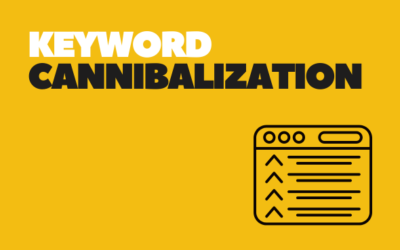Comprehensive Multilingual SEO Guide
Multilingual SEO is about respecting linguistic nuances and cultural differences while ensuring your website ranks high in search engine results across different regions. This strategy increases your global reach and builds trust and credibility among diverse audiences. This guide delves deep into the best practices of multilingual SEO, helping you create a more inclusive, effective, and impactful online presence. Let’s embark on this journey to unlock the potential of multilingual SEO and elevate your website to new international heights.
What Is Multilingual SEO?
Multilingual SEO is the process of optimizing your website for different languages to ensure it ranks well in search engine results pages (SERPs) in various linguistic regions. It involves more than just translating your site’s content; it includes your website’s cultural and contextual adaptation to resonate with diverse audiences. This approach ensures that your website is linguistically accurate, culturally relevant, and engaging for users in different countries.
The core of multilingual SEO lies in understanding and addressing the unique search intent and preferences of each language-speaking audience. It requires a strategic approach to keyword research, where you identify and target keywords that are relevant and popular in each language market. Additionally, Multilingual SEO involves optimizing various on-page elements like meta tags, headers, and descriptions in multiple languages.
Moreover, multilingual SEO takes into account the technical aspects of managing a multilingual website. This includes the use of hreflang tags to help search engines understand the language and regional targeting of your pages, ensuring the correct version of the site is displayed to users in different countries.
By implementing multilingual SEO, businesses can significantly enhance their online visibility and reach in international markets. It’s a crucial step for companies looking to expand their audience base globally and cater to the needs of customers in different linguistic regions. Effective multilingual SEO improves search rankings in various languages and enhances user experience, leading to increased engagement, trust, and conversions.
When Should You Use It?
Implementing multilingual SEO should be considered when your business is looking to expand its reach to audiences in different languages/regions or when you already have a significant amount of traffic from non-English-speaking countries. Here are specific scenarios where Multilingual SEO becomes essential:
Global Expansion: If your business is expanding its products or services to international markets, multilingual SEO is critical to ensure that your website resonates with and is visible to a global audience.
Diverse Audience Base: If analytics indicate a substantial number of visitors from countries where different languages are spoken, it’s a clear sign to adopt Multilingual SEO to cater to these varied audiences effectively.
Competitive Edge: In industries where competitors are already targeting multiple language markets, implementing Multilingual SEO can give you a competitive advantage and help capture a share of these markets.
Local Market Penetration: If you aim to penetrate local markets deeply, adapting your website to the local language and cultural context through Multilingual SEO can significantly increase your relevance and authority in these markets.
In these scenarios, multilingual SEO is not just beneficial but essential for the growth and success of your business in the global marketplace. It enables you to connect with and engage a broader range of audiences, ultimately leading to increased brand awareness and revenue.
Planning Out Your Multilingual SEO Strategy
Planning a successful Multilingual SEO strategy involves several key steps:
1. Market Research:
Understand the language and cultural nuances of your target markets. Research popular search engines in those regions and the search behavior of the audience.
2. Language-Specific Keyword Research:
Conduct thorough keyword research for each target language. Identify the keywords and phrases your target audience uses to search for products or services in their language.
3. Cultural Adaptation of Content:
Ensure that your content is not just translated but culturally adapted. This means considering local customs, traditions, and preferences in your content creation.
4. Technical SEO Considerations:
Implement hreflang tags to indicate the language and geographical targeting of your content. Ensure your website structure supports a multilingual setup with language-specific subdirectories or subdomains.
4.1. Locale-specific URLs:
URL structure is the first step to deciding how to manage a multilingual website, and this decision will affect the website’s management in the long run. There are 4 main strategies to apply multilingual SEO. Based on our experience, subdirectories with gTLD (generic top-level domain) is a great starting point for multilingual SEO since it requires less software support and are easy to manage. Additionally, it gives a powerful signal to both Googlebot and users about which language version is used.
| URL Structure | Pros | Cons |
|---|---|---|
| Country-Specific Domain (example.fr) | Clear Geotargeting, Server location irrelevant, Easy separation of sites | Expensive, requires more infrastructure & resources |
| Subdomains with gTLD (fr.example.com) | Easy to set up, easy separation of websites | Users might not recognize geotargeting from the URL alone |
| Subdirectories with gTLD (example.com/fr/) | Easy to set up, low maintenance | Single server location, separation of sites harder |
| URL Parameter | Easy to set up | Difficult segmentation based on URL |
4.2. hreflang Tag
If you work on multiple SEO, the hreflang tag is crucial to tell Google about different language and region variations. This element has 2 pieces as language code and the URL of a page. You should add the hreflang tag into the page header as:
<link rel="alternate" hreflang="en" href="/en/" />
4.3. Sitemap
In a multilingual sitemap each URL should have <xhtml:link rel=”alternate” hreflang=”supported_language-code”> code that lists alternate version of the URL, including itself.
 5. Optimize for Local Search Engines:
5. Optimize for Local Search Engines:
While Google is dominant globally, some countries prefer local search engines (like Baidu in China or Yandex in Russia). Optimize your content for these search engines as well.
6. Quality Translation and Localization:
Invest in high-quality translation and localization services. Avoid automatic translations, as they can lead to inaccuracies and cultural insensitivities.
7. Mobile Optimization:
Ensure that your website is mobile-friendly, as many users in international markets primarily access the internet via mobile devices.
8. Continuous Monitoring and Optimization:
Regularly monitor your website’s performance in different markets and make necessary optimizations based on data and analytics.
By carefully planning and executing these steps, you can create a robust Multilingual SEO strategy that effectively targets international markets, enhances your global presence, and drives traffic and conversions from diverse audience segments.
How to Improve Your Multilingual SEO
Improving your Multilingual SEO involves continuous effort and strategic planning. Here are the key practices to enhance your multilingual SEO performance:
Regularly Update Content:
Keep your multilingual content fresh and relevant. Regularly update it to reflect current trends, cultural events, or changes in consumer behavior in each target market.
Localized Link Building:
Build backlinks from websites popular in your target regions. Localized link-building enhances the credibility and authority of your website in specific markets.
Optimize for Local User Experience:
Tailor the user experience to each language audience. This includes design elements, currency, and units of measurement, ensuring that the website feels native to each audience.
Responsive and Fast-Loading Website:
Ensure that your website is fast-loading and responsive across all devices. Page load speed is a crucial factor for SEO and user experience, especially in mobile-dominated markets.
Engage with Local Social Media:
Utilize social media platforms popular in your target regions. Engaging with the audience in their local social media environments can drive traffic and improve your site’s visibility.
Monitor Local SERPs and Competitors:
Regularly monitor search engine results pages (SERPs) in different languages and keep an eye on what competitors are doing. This can provide insights into improving your own strategies.
Cultural Sensitivity and Relevance:
Ensure that all content, images, and marketing campaigns are culturally sensitive and relevant. Avoid generalizations and stereotypes that can alienate your audience.
Use Analytics to Track Performance:
Use analytics to track the performance of your website in different languages. Analyze user behavior, conversion rates, and engagement to identify areas for improvement.
By implementing these practices, you can significantly improve your Multilingual SEO, effectively reaching and engaging with diverse international audiences and enhancing your global online presence.

 5. Optimize for Local Search Engines:
5. Optimize for Local Search Engines:

